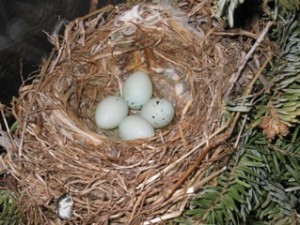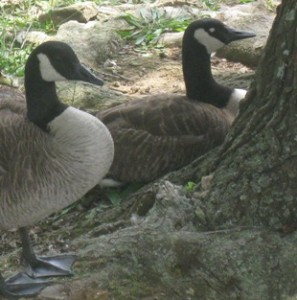Rhythms and play of sounds in poetry call attention to words and invite physical response—clapping, tapping—all exploration of language.
Even young children who have heard poems can tell about an idea, an image, or a happening as someone else records. As a grandmother, I began sending poems to my young grandson before he was a year old. Imagine my delight when he sent me his first poem. Recently, I sent him a poem about geese I saw in an unexpected place. Here is my poem:
Goose Dreams
In the middle of town,
three quiet geese
sit in the shade
of a maple tree
and dream
of a rippled lake.
And here is Jonathan’s 3 1/2-year-old response (with Mom’s typing):
The geese love to swim
When they are done they walk in a line
The babies walk behind their mom
One after another
Having nudged poems out of first graders (to twelfth graders) as well as my own preschool sons years ago, I know that children have poems in them. All they may need is some poems to hear, a prompt, and someone to appreciate their creative ideas.
Share poems!


